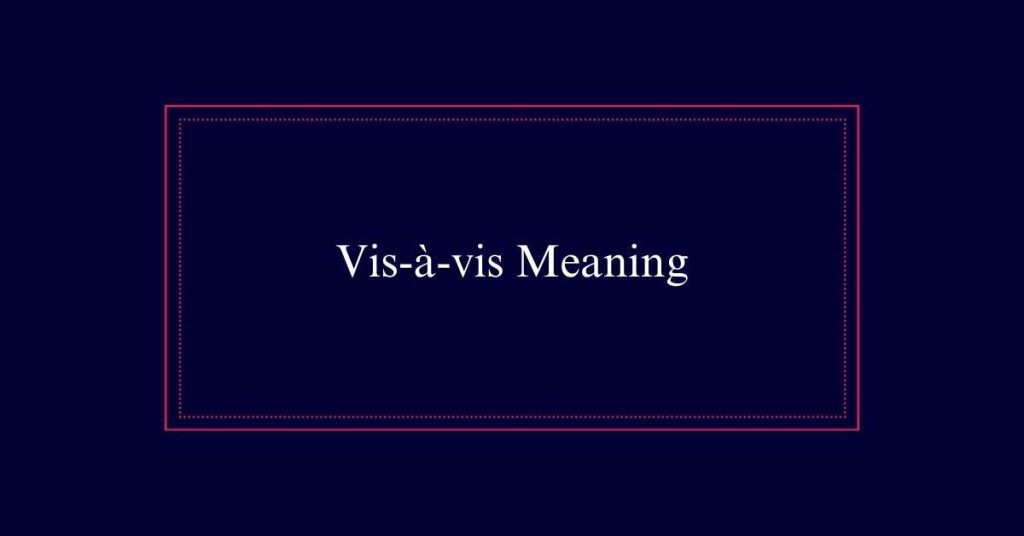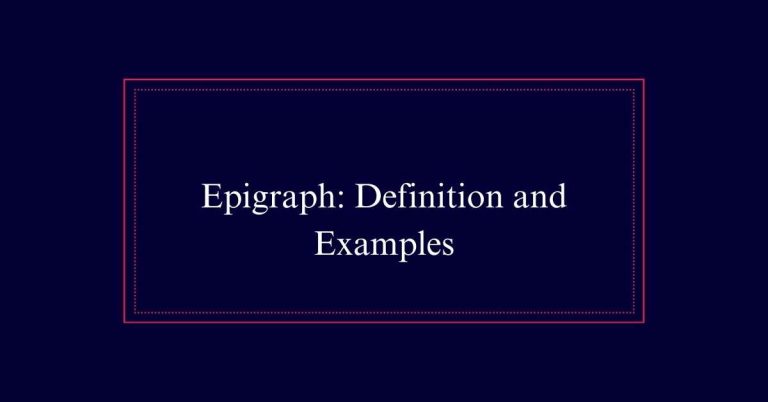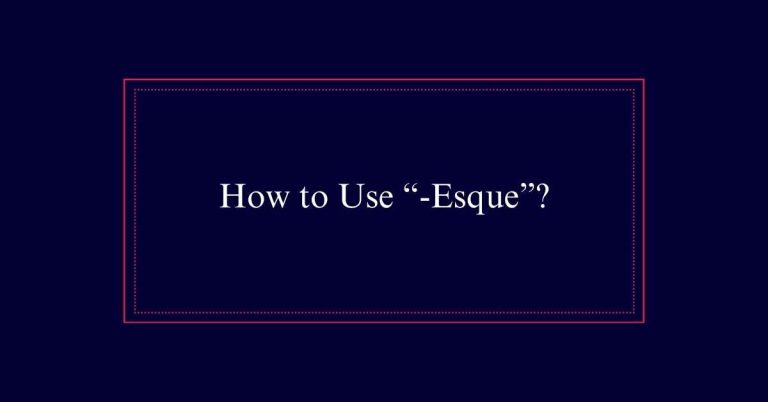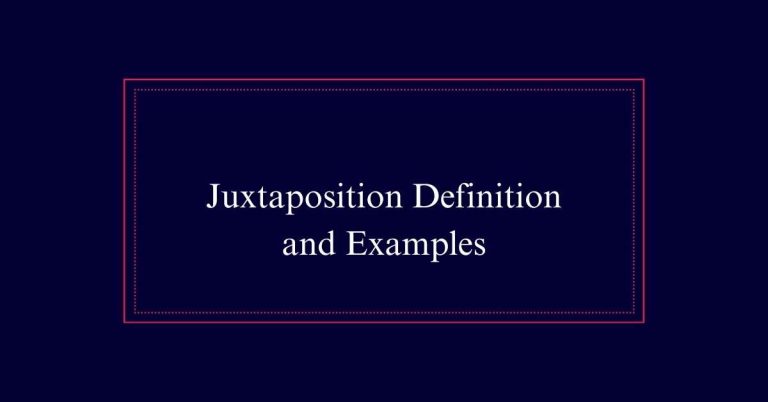Vis-à-vis Meaning
The term ‘vis-à-vis’ comes from French and means ‘face-to-face.’ In English, it is used to show direct comparison or positioning. It can serve as an adverb, adjective, noun, or preposition in various contexts such as business, literature, and everyday conversation. For example, in business, it might compare growth plans vis-à-vis industry trends.
Definition of Vis-à-Vis
‘Vis-à-vis’ is a French term that literally means ‘face-to-face.’ It originates from the French word visage, meaning ‘face.’
In English, it retains its original spelling and accents and is used to denote comparison or positioning something opposite. The term can function as an adverb, adjective, noun, or preposition.
As a noun, it can refer to a companion at a social event or the person opposite you. As a preposition, it indicates something facing or compared to another.
This versatile phrase finds usage in various contexts, including business, literature, and journalism. Its adoption into English adds a sophisticated touch to communication while enhancing clarity and precision in expressing relationships and contrasts.
Literal Interpretation
The literal interpretation of ‘vis-à-vis’ is ‘face-to-face,’ reflecting its direct translation from French. This term, rooted in the word ‘visage,’ meaning face, traditionally denotes a situation where two parties are directly opposite each other.
In English, ‘vis-à-vis’ is used in various contexts, often to describe physical or metaphorical positioning. For example, in a dialogue, characters may be sitting vis-à-vis, indicating they are facing each other.
Beyond its literal sense, the term extends to comparisons, implying a direct relationship or contrast between two elements.
French Origins
Originating from French, the term ‘vis-à-vis’ directly translates to ‘face-to-face.’ This phrase has deep roots in the French language, where ‘vis’ is derived from ‘visage,’ meaning face.
The term has been seamlessly integrated into English, retaining its original spelling and accents. Its etymology reflects the direct and confrontational nature of the expression, encapsulating scenarios of direct comparison or opposition.
Key French origins of ‘vis-à-vis’ include:
- Etymology: Derived from ‘visage,’ meaning face in French.
- Spelling: Maintains original French spelling and accents in English usage.
- Adoption: Seamlessly adopted into English as a loanword, enriching the language with its nuanced meaning.

Usage in English
Having explored its French origins, we can now examine how ‘vis-à-vis’ is used in English to convey comparisons and oppositions.
As a preposition, it often illustrates how one entity compares to another, such as in ‘Private company’s products are too expensive vis-à-vis competitors.’ It also indicates a direct opposition or face-to-face positioning: ‘Our country’s stance vis-à-vis the new policy remains firm.’
As an adverb or adjective, ‘vis-à-vis’ can describe literal or figurative positioning, enhancing clarity and precision in writing. Its usage spans business, social, and informal contexts, adding a sophisticated touch to communication.
Noun Form
In its noun form, ‘vis-à-vis’ refers to a person who is either accompanying you to a social event or seated opposite you. This usage captures the essence of face-to-face interaction, rooted in its French origins.
Here are three key points to understand:
- Social Companion: ‘Vis-à-vis’ can describe someone who joins you at a social gathering, emphasizing their role as your partner or escort.
- Opposite Seating: It can also denote the person directly across from you, often in formal settings like dinners or meetings.
- Historical Context: Historically, ‘vis-à-vis’ was used to describe a type of carriage where passengers sat facing each other.
Prepositional Use
As a preposition, ‘vis-à-vis’ is utilized to draw comparisons or indicate that something is facing or opposite another. This usage helps in expressing relationships between two elements clearly and precisely.
For instance, in business contexts, it often highlights competitive dynamics. In social settings, it can describe physical positioning. The table below illustrates these uses:
| Context | Example |
|---|---|
| Business | “Our market share vis-à-vis competitors.” |
| Social Events | “The seating arrangement vis-à-vis the stage.” |
| Informal | “His opinion vis-à-vis mine on the matter.” |
Sentence Examples
To illustrate the versatility of ‘vis-à-vis,’ consider the following examples used in various contexts:
- Business Comparison: ‘The private company’s products are too expensive vis-à-vis their competitors.’
- Historical Responsibility: ‘The nation’s historic responsibility vis-à-vis Aleppo and Syria cannot be ignored.’
- Trade Relations: ‘The country finds itself in an invidious position in trade vis-à-vis China.’
These examples demonstrate how ‘vis-à-vis’ can be used to compare, contrast, and highlight relationships between different entities.
Whether in business, historical, or geopolitical contexts, this phrase adds clarity and precision, making the communication more effective.
Historical Context
Understanding the historical context of ‘vis-à-vis’ sheds light on its enduring relevance in modern language. The term originated in 18th-century France, primarily used in social settings to denote people facing each other. Over time, it evolved to signify comparisons and contrasts in English, retaining its original French spelling and meaning.
To illustrate the historical use and evolution of ‘vis-à-vis’, consider the table below:
| Historical Era | Primary Usage | Contextual Example |
|---|---|---|
| 18th Century France | Social interactions | Describing dance partners at a ball |
| 19th Century Europe | Literary and formal | Comparing political stances in essays |
| 20th Century Onward | Business and journalism | Analyzing market positions vis-à-vis rivals |
Etymology
The etymology of ‘vis-à-vis’ traces back to the French language, where it literally means ‘face-to-face’. This term has evolved in English usage while retaining its original spelling and accent, offering a sense of directness and comparison. Derived from the French word ‘visage,’ which means ‘face,’ it encapsulates both literal and figurative interactions.
Here are three key points about its etymology:
- French Origin: ‘Vis-à-vis’ is a loanword from French, maintaining its original spelling.
- Literal Meaning: It directly translates to ‘face-to-face’, reflecting its comparative nature.
- Retention in English: The term keeps its French characteristics, adding a sophisticated touch to English communication.
Modern Applications
Frequently, ‘vis-à-vis’ is employed in modern business communications to compare products, strategies, and market positions. It simplifies complex comparisons, making it easier to highlight differences or advantages.
In marketing, for example, a company might analyze its sales figures vis-à-vis its main competitors to gauge performance. Similarly, strategic discussions often involve comparing growth plans vis-à-vis industry trends. The term is also useful in project management, where team progress can be assessed vis-à-vis deadlines.







